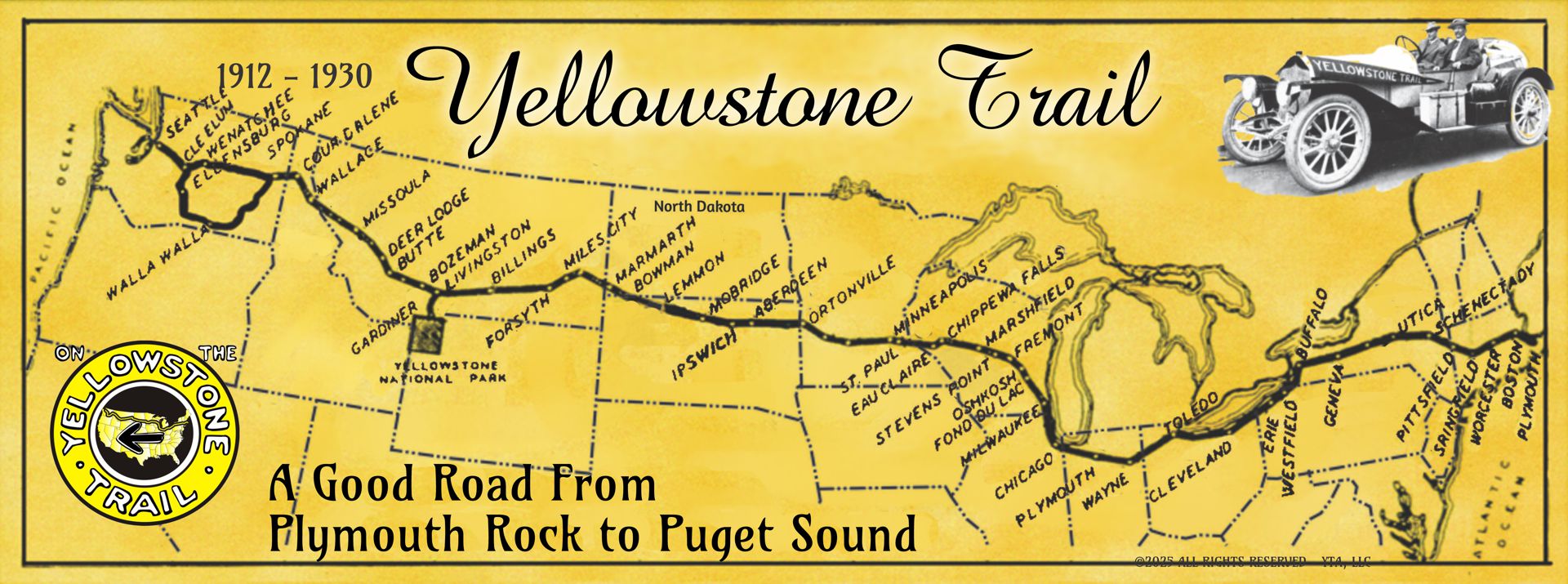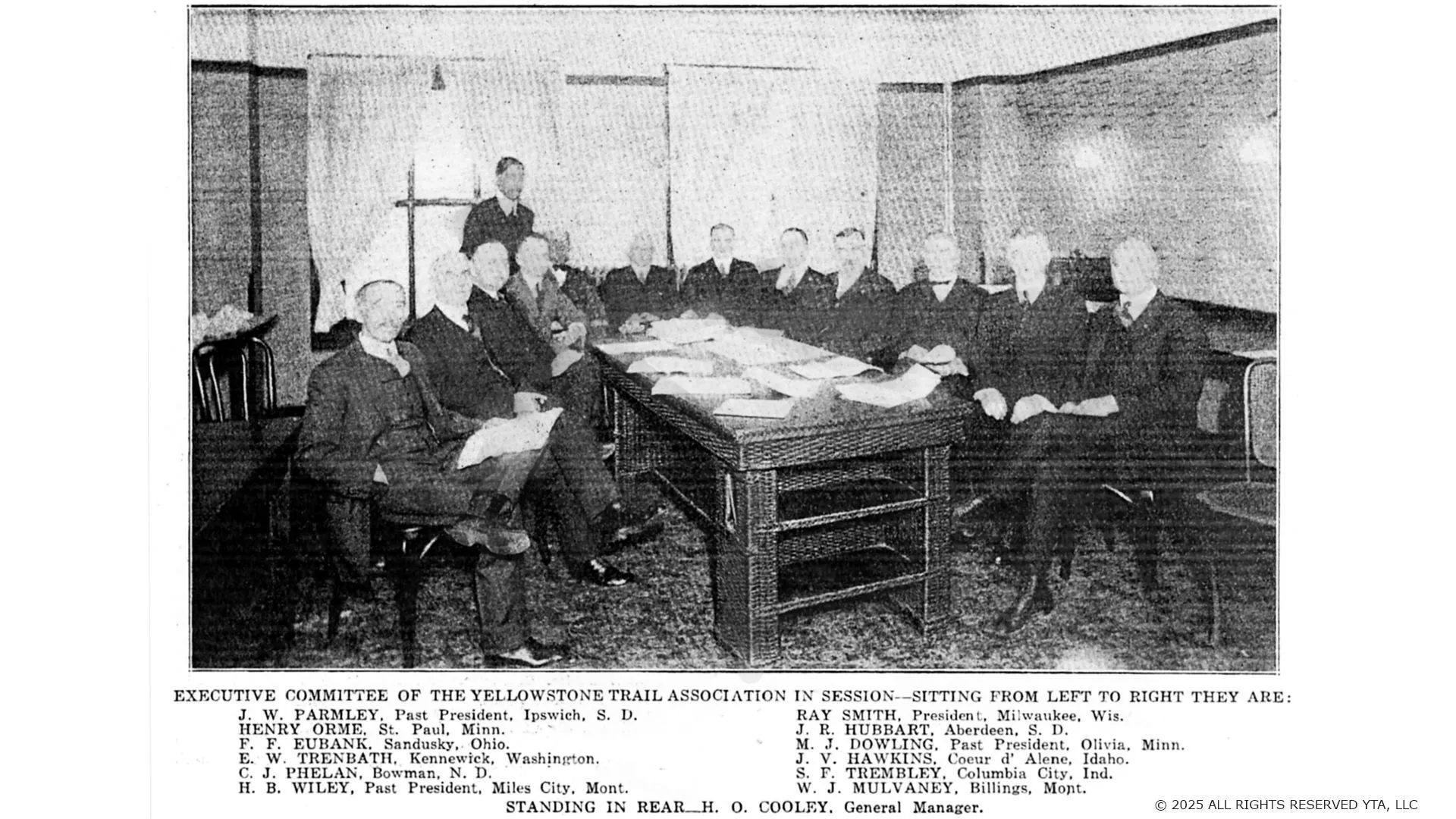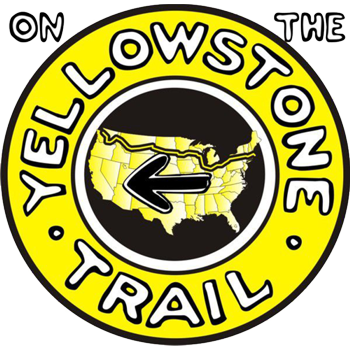
HISTORY of the YT

The Yellowstone Trail developed in parallel with the nationwide effort to improve roads.
The huge burden of financing roads used to be upon the local landowner and townships.
Then, that burden gradually moved up the levels of government until eventually the federal government, the states, the counties and the townships all shared the cost.

History of the Yellowstone Trail (YT) begins with the Yellowstone Trail Association (YTA).
The Yellowstone Trail was the direct result of tremendous effort by the Yellowstone Trail Association.
The Yellowstone Trail transcontinental route was conceived by J.W. Parmley of Ipswich, SD, in 1912.
Today, the vast majority of the Yellowstone Trail has become Interstate 90.
The original Yellowstone Trail is still evident in some areas, mainly in the western United States.
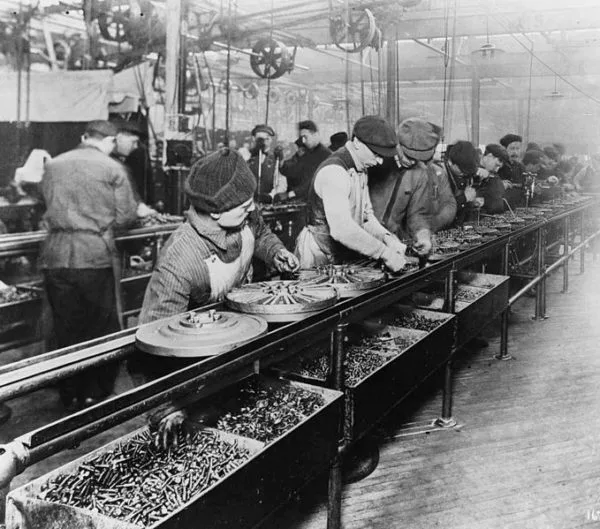
The “Moving Assembly Line” changed history .
Cars moving down an assembly line during production proved to be a far superior method.
The workers stood in the same position, while the parts passed by, dramatically increasing production.
American auto production soared in 1910 to over 100,000 per year!
New cars, being shipped on the rail road system to all States, are shown below.
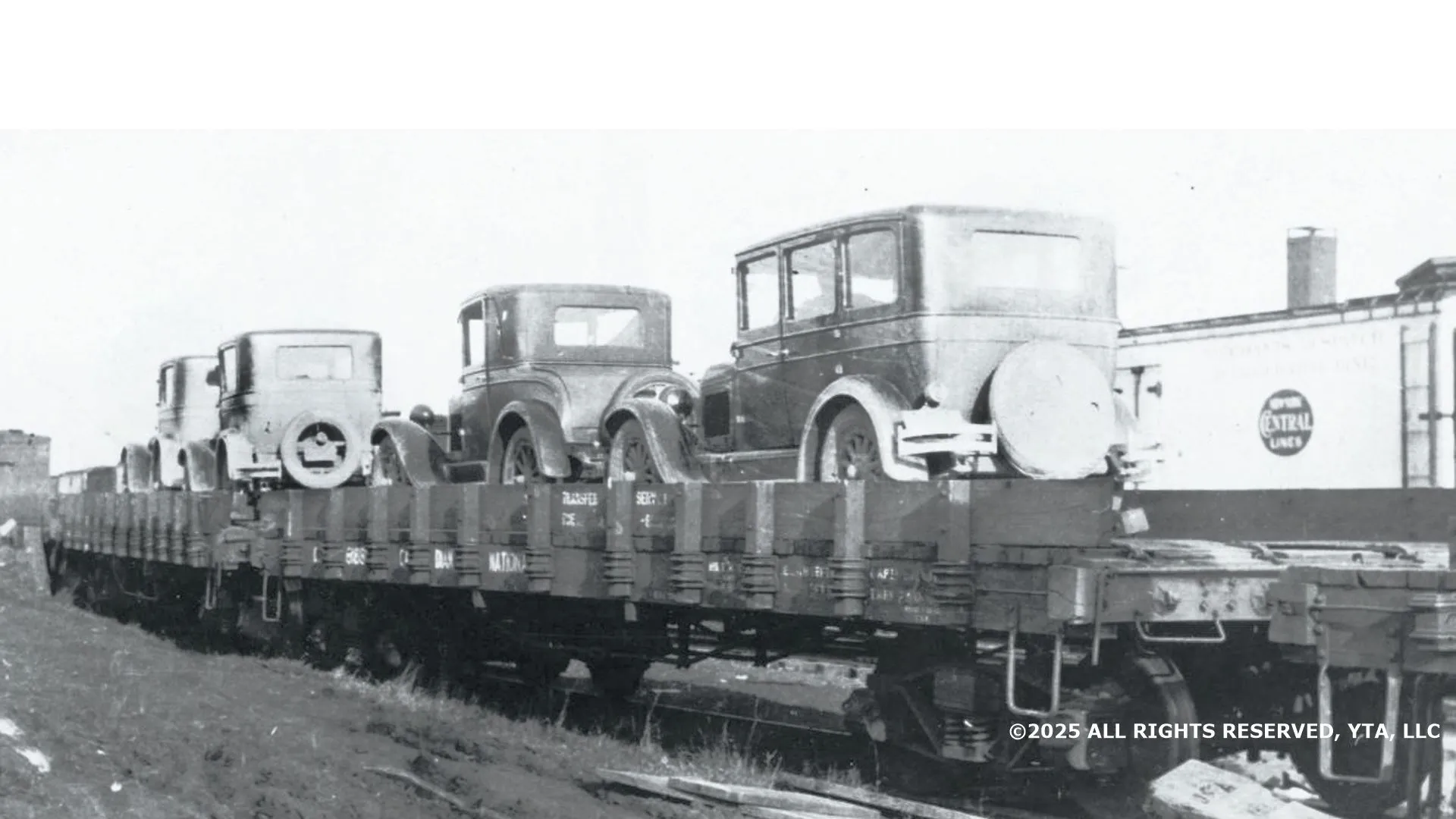 Suddenly, and without warning, by 1912 America was being flooded with over 100,000 automobiles per year from various manufacturers, with Ford leading the way.
Suddenly, and without warning, by 1912 America was being flooded with over 100,000 automobiles per year from various manufacturers, with Ford leading the way.
It was quickly realized the auto could not traverse upon the same trail as a horse (see photo below).
The new invention (auto) needed a smooth, flat surface upon which to drive.
In 1912, there were very few improved roads to drive the autos which were being delivered throughout America, mainly via trains on the vast network of established railroads.


Scroll down this page to discover facts, features, pictures and more!
Join us on the Discover Page, an open forum to submit your thoughts, ask questions, discover new things, and, learn about the current status of the amazing Yellowstone Trail.

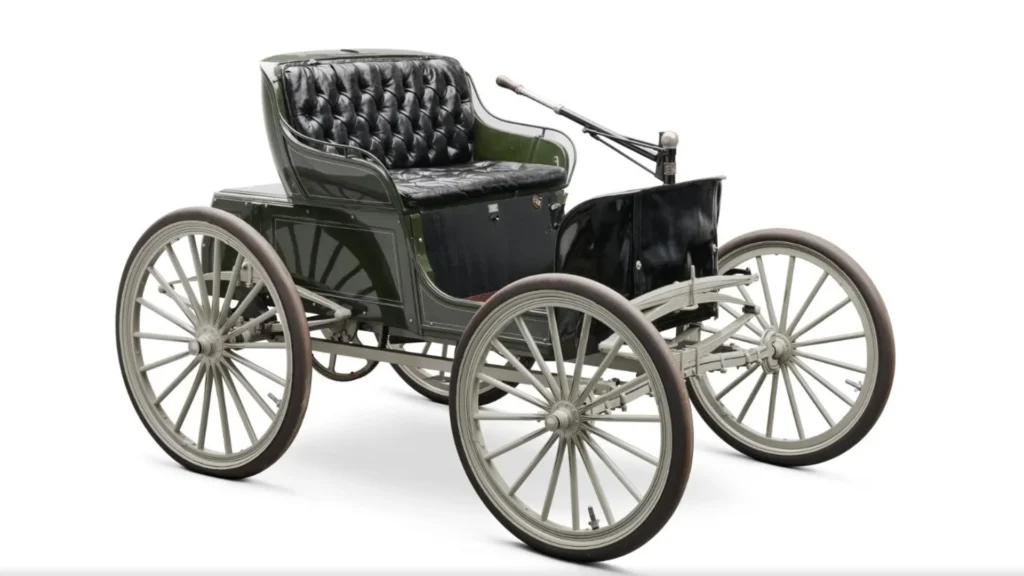
What is the Yellowstone Trail
The Yellowstone Trail was the first transcontinental automobile highway in the United States through the northern tier of states from Washington State through Massachusetts.
Yet, too few people are aware of its existence or its social, political, and economic effects on either the local communities or the nation.
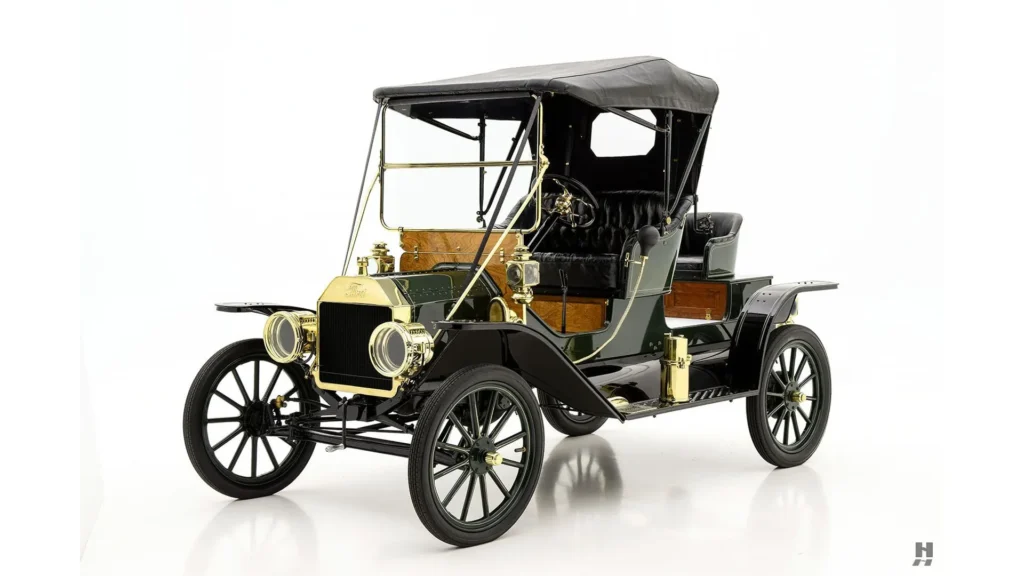
Road Building in 1912
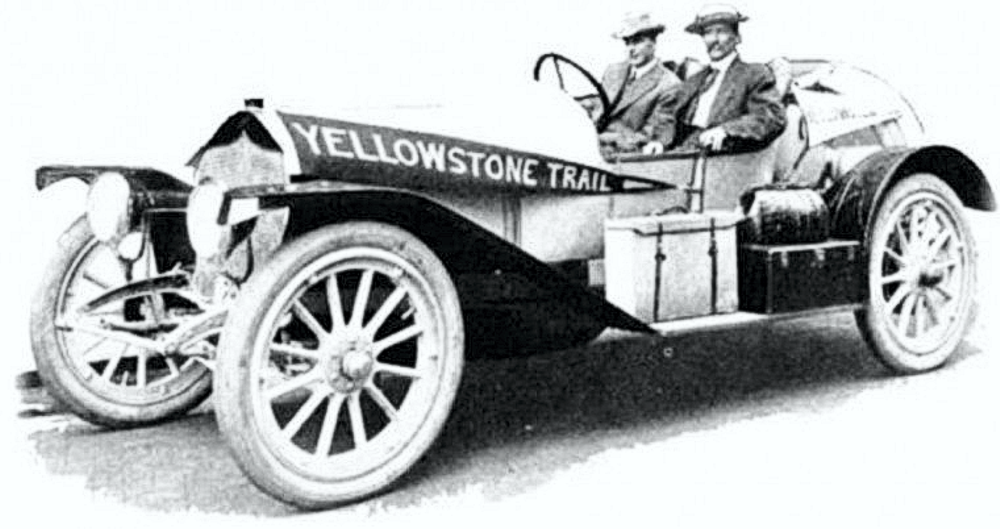
… more Yellowstone Trail HISTORY …
The Yellowstone Trail transcontinental route was conceived by J.W. Parmley of Ipswich, SD, in 1912.
↓
Read below why he did it with so much urgency!
America was being flooded with automobiles and very few roads to drive upon!
American transportation went from horses to gas-powered autos almost overnight!
By 1912, there were over a ½ million new cars produced over the last 4-years.
American Auto Production Totals 1909 - 1912
Production for 1909 – Total 75,739
Production for 1910 – Total 129,823
Production for 1911 – Total 167,530
Production for 1912 – Total 187,384
♦ ♦ ♦ ♦ ♦ ♦ ♦ ♦
1909 to 1912 New Autos Produced in America – Total 560,476
Check out the “new-car” lineup for 1912!
When the “horseless-carriage” replaced the horse, a big problem was soon discovered,…
The horseless-carriage (gas-powered auto) could NOT follow the path of the horse, but rather needed a special surface to drive on, especially when the weather got bad.
Autos had special needs and people soon discovered what was needed to avert disaster!
∇
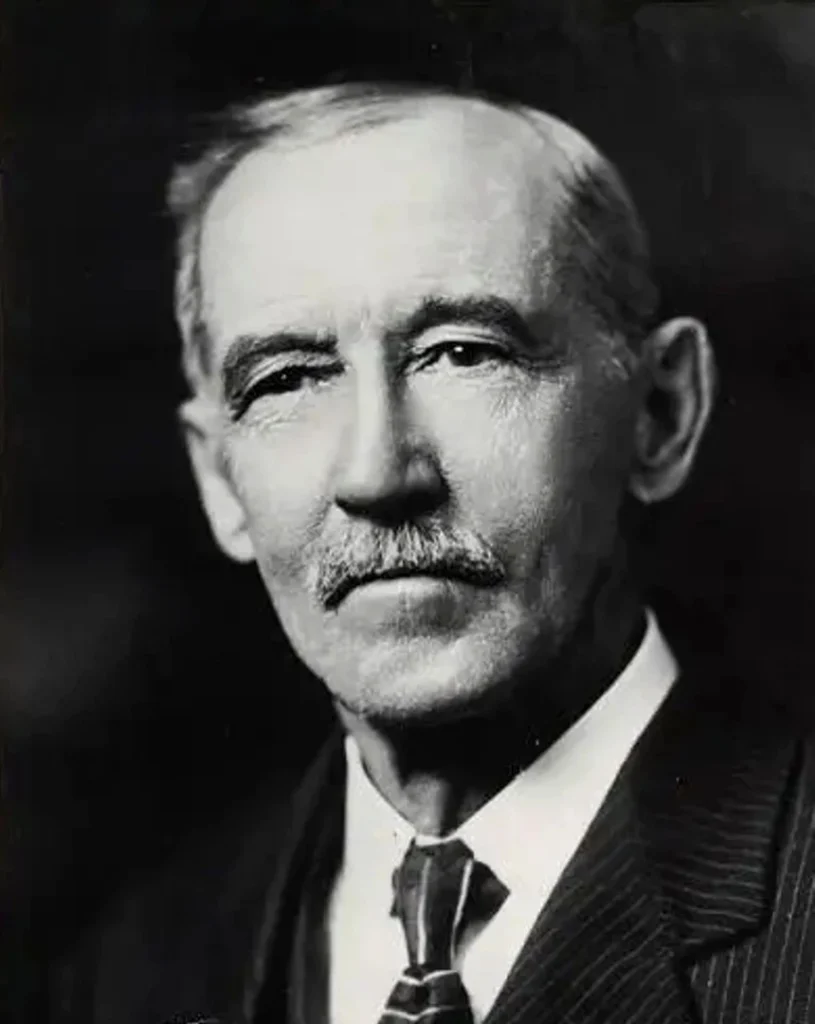
Insert the genius of J. W. Parmley.
Parmley realized something needed to be done and quickly!
The Yellowstone Trail transcontinental route was conceived by J. W. Parmley of Ipswich, SD, in 1912.
The automobile was just becoming popular.
Intercity roads were plagued with sand, potholes and mud.
The Wheelmen Bicyclists Club wanted roads too!
Bicyclists of the previous decade, organized as the Wheelmen and counting thousands as members, had been pushing state and federal governments many years for roads.
In 1912, there were very few good, all weather roads.
There were no useful long distant roads and no government marked routes at all (zero).
Railroads had been the dominant, almost sole, method of travel, but were losing their allure.
Railroads used monopolistic freight rate-settings and had very inconvenient schedules.
Railroads were delivering Automobiles throughout America, and, after arriving at their destinations, it was realized there were very few roads upon which to drive the autos on!
ζ
The privacy and autonomy of the automobile was not to be denied.
ζ
The video below is of the 1914 Douglas County Fair in Waterville, Washington, showing lots of autos.
Look closely to see an Idaho license plate, it must have been a long journey.
Photo courtesy Douglas County Museum, Waterville, WA.
Click the Play Button below:
The ever growing number of autos resulted in demand for roads to drive.
First for pleasure, then for crucial societal purposes:
Doctors to get to patients;
Farm products to get to the railroads;
Military purposes.
To begin with, J. W. Parmley and his business colleagues wanted to develop a good road from Ipswich to Aberdeen, both in South Dakota, 25 miles apart.
The “can do” pioneer spirit of the time immediately emerged and in a few weeks time the intent had expanded to include a good road to Mobridge, SD, then to Hettinger ND, then to the great tourist destination, Yellowstone National Park.
Soon, it was understood that under their leadership there was to be …
“A good road from Plymouth Rock to Puget Sound.”
The spark ignited in Ipswich had inspired an entire nation!
The call-to-action was accepted, more or less, in the northern 13 states and work began.
The Yellowstone Trail Association (YTA) stayed active until around 1930, when the obvious need for national, state, county, city and rural roads was taken over by government agencies.
In the 1990’s, the YTA was re-established by John and Alice Ridge.
Thanks to the Ridge’s dedication, research, hard-work, and financial contributions, the Yellowstone Trail Association continues today!
Click Here for the complete YTA history.
♦♦♦
Today, almost all of the route of the Yellowstone Trail is on slower, less traveled roads.
Some sections of the Trail, especially in the West, have remained little changed and are a delight to visit even today.
Visit our Map Page to see an excellent collection of YT Maps created by John Ridge.
YTA is currently building an updated, modern-day interactive map that will guide you while driving today’s Yellowstone Trail, expected to be released in Spring 2025.
♦♦♦
Today’s YT Association is active with members who enjoy exploring the YT, learning about its history, researching its location, and, exchanging information and ideas.
We cordially invite you to Join in our ongoing mission to preserve Yellowstone Trail’s history, the continual discovery of new facts, and, educate our children where today’s highway system came from and why such urgency!
